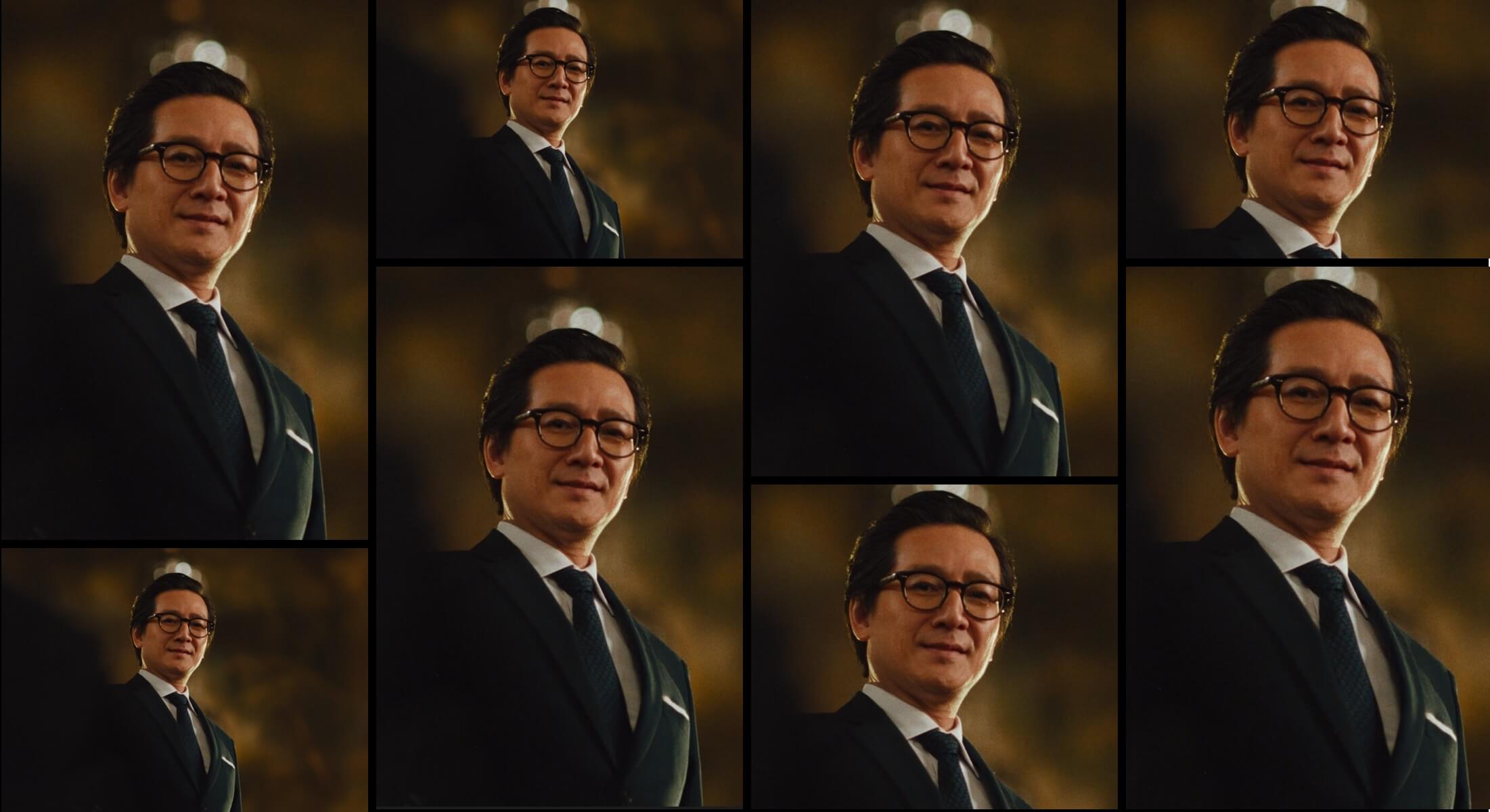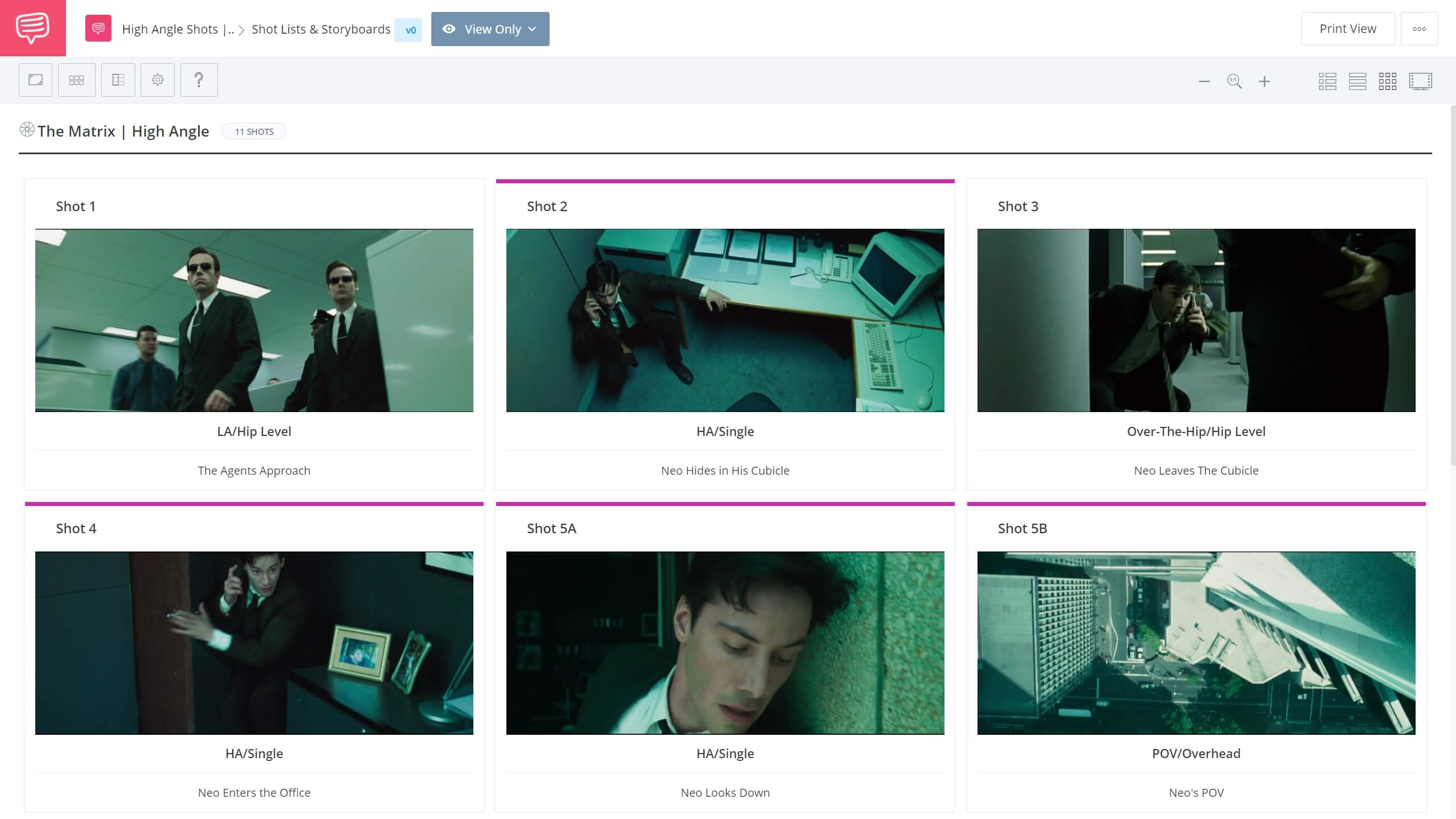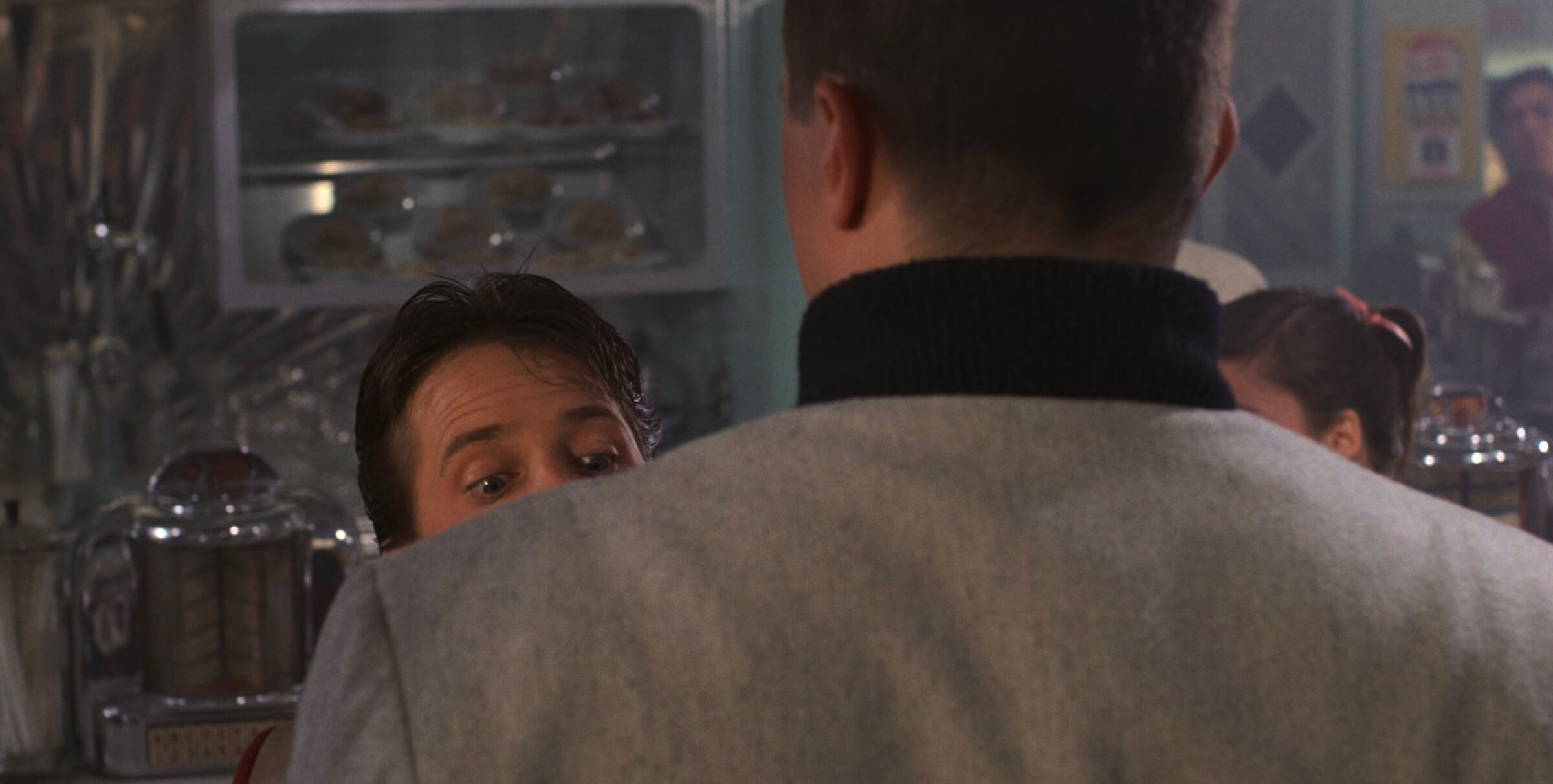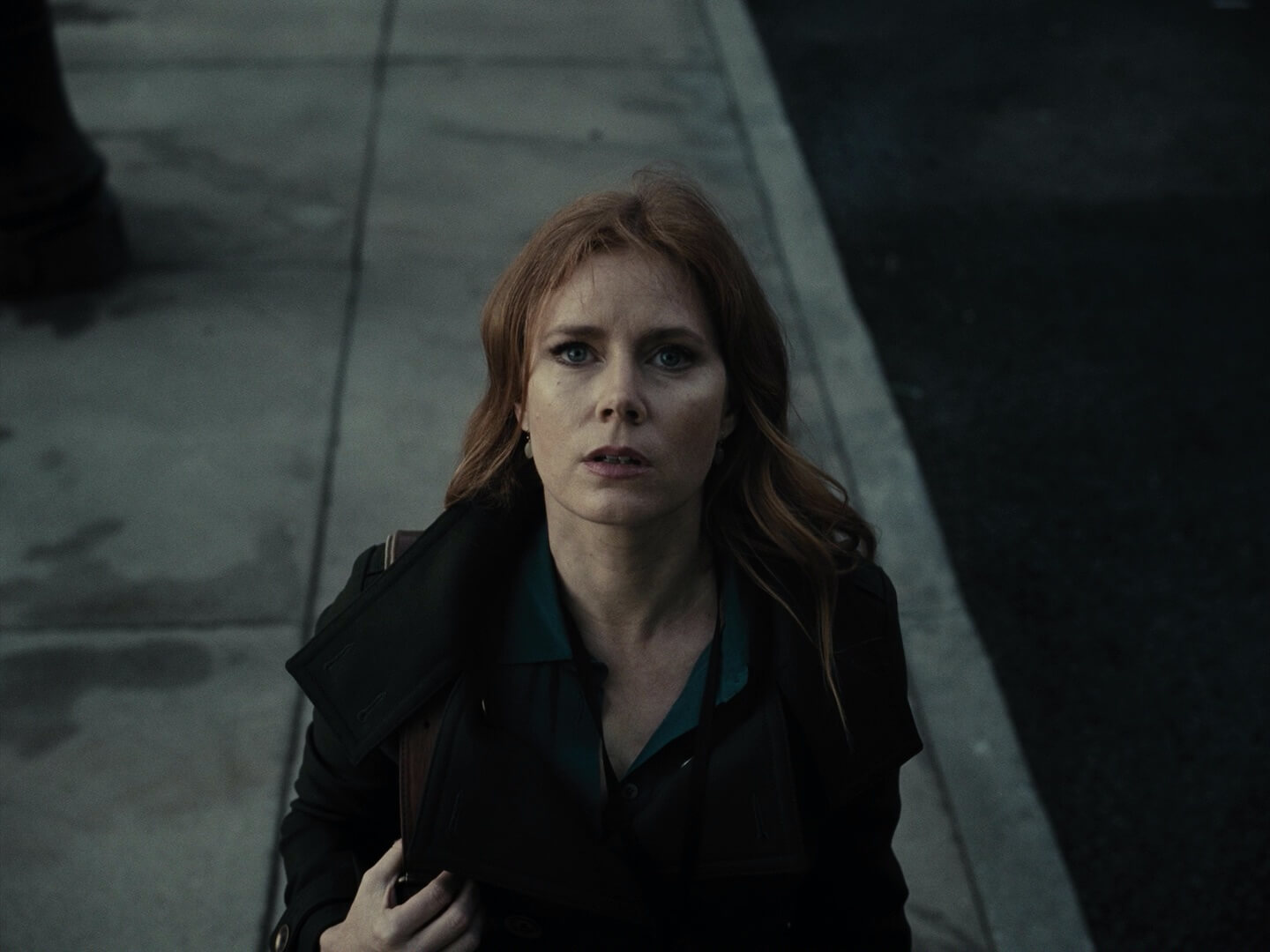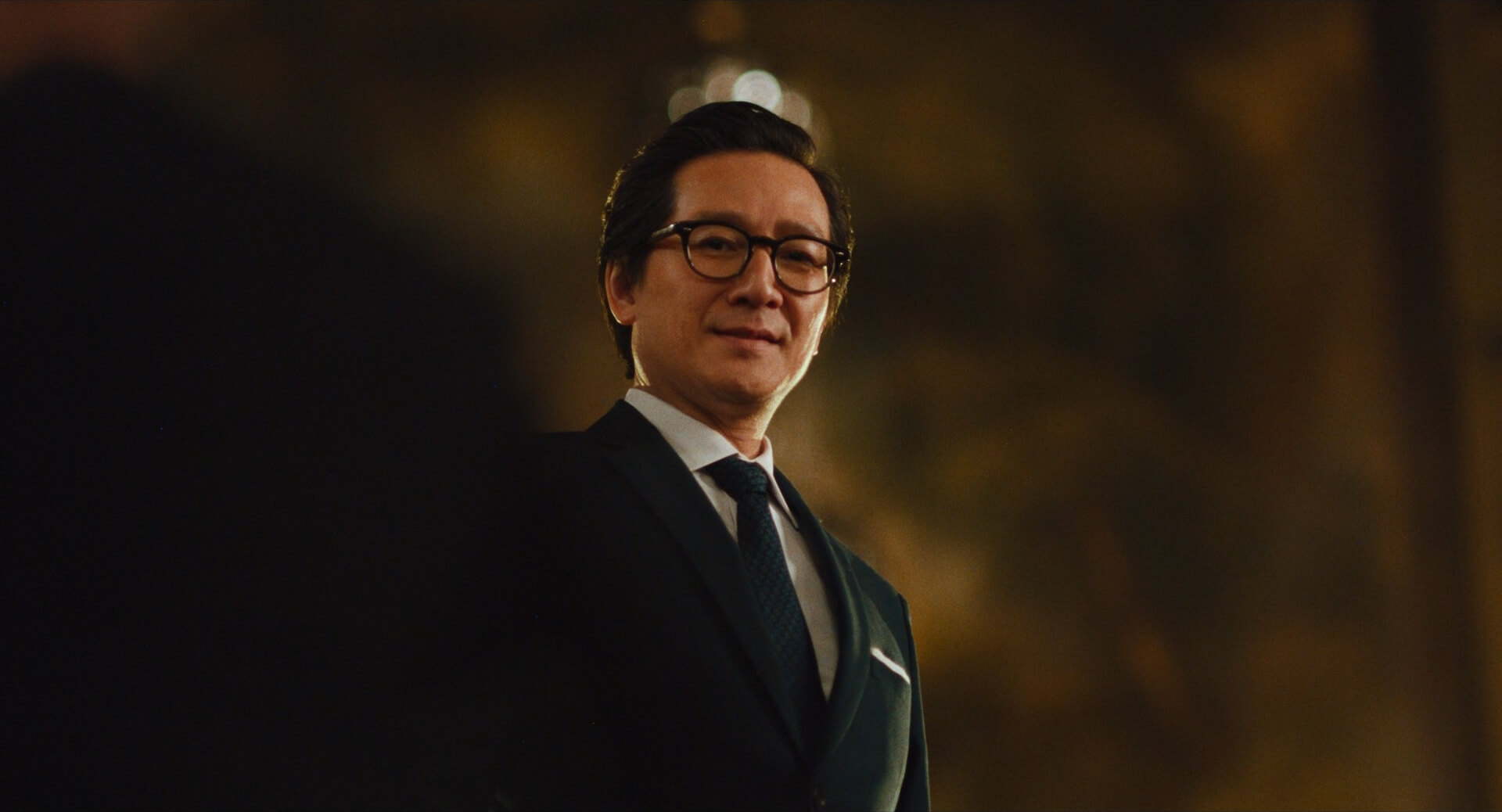Extreme Close Up Definition
What is a medium wide shot?
A high angle shot is when the camera looks down on the character or subject from an elevated perspective. This can range from just slightly above the subject to nearly overhead. If the camera is directly overhead, looking straight down, this is typically referred to as an overhead shot.
For more, read our full breakdown of the high angle shot, including examples that illustrate the various functions.
Meanings & Purpose
Extreme close up shot examples
Before we dive in the high angle shot and everything it can do, let's start with some examples to familiarize ourselves with this type of camera shot. Open this visual gallery of high angle shots to see the variety and their functions firsthand.
Suggests weakness
Shows a character at a low point
Implies dominance
Isolates the character
Usages
What does a high angle shot convey?
The high angle shot is a multifaceted tool for any visual project, including but not limited to film, photography, music videos, documentaries, commercials, and more. There is a general built-in language being used any time we see a high angle shot. Overall, the high angle shot places the subject in a "less-powerful" position, but that doesn't always mean a negative thing. Here are just some high angle examples and the effects that they create.
Dominance
Character A stands over Character B in a position of authority. We use a high angle shot of Character B to accentuate their lack of authority.
Shame or embarrassment
If Character A is feeling low, shameful, or embarrassed, shooting them in a high angle shot will communicate those emotions subtly to the audience.
Awestruck wonder
If Character A is looking at something bigger or higher than them with a look of pure wonder, the high angle shot amplifies their sense of awe.
Awestruck wonder
If Character A is looking at something bigger or higher than them with a look of pure wonder, the high angle shot amplifies their sense of awe.
Qualities
High angle shot vs low angle shot
The difference between a high angle shot and a low angle shot can be confusing. Mostly because a high angle shot looks down (low) and a low angle shot looks up (high).
The best way to remember the difference is to think of the position of the camera in relation to the subject. In a high angle, the camera is higher than the subject. With a low angle shot, the camera is lower than the subject.

Case Study
Shot listing a high angle
To get a more filmmaker's understanding of how to use a high angle shot, let's look at a specific high angle example. In the scene below, the Wachowskis included many purposeful high angle shots.
Click the shot list below, to see the full scene broken down, and ask yourself what each high angle shot communicates to a viewer.
There is obviously more than one way to use a high angle shot. In fact, there are many.
Let's dive into the creative applications of a high angle when paired with other directing choices.
Unique Pairings
What is the effect of a high angle shot when paired with another camera technique?
How to combine the high angle shot
As you know, there are many camera techniques, each with their own unique properties and effects. In isolation, they work just fine. But in combination, these camera techniques can take on more nuanced and effective qualities. Let's see what happens when you combine the high angle shot with the following camera techniques.
- Push: Combined with a push, a high angle shot can build tension or emphasize a character's reaction.
- Pedestal Up: As the camera moves upward, the high angle shot becomes more pronounced.
- Dutch Angle: With the addition of a Dutch angle, a high angle shot can feel more destabilized, like the world is imbalanced.
- Zoom: TBD
- Dolly: TBD
- Tilt: TBD
- Tracking: TBD
- Wide: TBD
- Close up: TBD
Frequently asked questions about the High Angle Shot
A high angle shot positions the camera (and therefore the audience) literally and figuratively above the subject.
A high angle shot can convey a range of meanings depending on the context of the scene. If a character is feeling inferior or vulnerable, or if they are beaming with happiness, a high angle shot can help accentuate those characteristics and emotions.
Since the camera informs the audience's perspective, and the camera is positioned above the subject, the overall effect tends to put the subject at a disadvantage, or to make them seem less powerful.
On the other hand, if a character is looking up at something with awe and wonder, we still might consider them to be smaller or less powerful but in a more positive connotation.
A high angle shot can be used for a variety of purposes, including:
- Showing a character at a low moment
- When a character is confronted
- Placing the subject in an inferior position
- When a character is in a horizontal position like laying down
- To show more horizontal actions like writing, cooking, etc.
- To capture the ground around the character
- To give who or what a character is looking up to more power, influence, size, etc.
Shooting a high angle shot is very simple:
- Choose the distance between the subject and camera
- Decide how high the angle should be above the subject
- Raise the camera to the desired height
- Tilt the camera down and frame the subject accordingly
